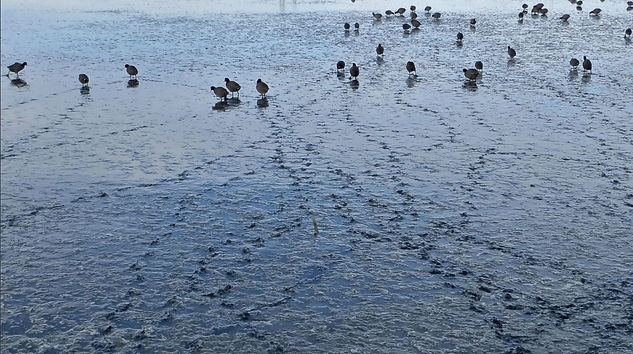Mudflat Augmentation

Type of Development
Restoration
Topography
Baylands
Longevity
Environment
Natural Habitat
Maintenance
Low
Cost
Dependent on scale and availability of fill.
Overview
Mudflat augmentation is the intentional placement of fine silts and clays to elevate mudflats relative to rising tides, and can include indirect placement of silts (through reestablishing the watershed connectivity) or direct placement (physical placement of dredged sediment from Bay). Mudflat augmentation decreases sea level rise impacts, reduces storm surges, and restores endangered habitats. Indirect mudflat augmentation requires reconnecting mudflats to tidal marshes and the baylands to the greater watershed. This generates natural sediment flows and a natural increase in elevation over time. Directly placing pre-dredged material from the Bay, which is already nutrient rich, into the mudflat would slowly raise the elevation, over an extended period of time. Restoration of the watershed leads to greater overall health of the mudflats and Bay.

Function
Mudflat augmentation elevates land which decreases sea level rise and storm surge impacts, encouraging sediment and nutrient flow to restore habitats.
Benefit
Increasing mudflat elevation in relation to tides will protect adjacent infrastructure and habitats by dissipating wave energy and limiting the wave volume that is reaching shores. Therefore, tidal marsh erosion is limited, further protecting the adjacent habitat and infrastructure. Reintroducing natural sediment supply will encourage healthier ecosystems by creating a nutrient rich environmental refuge for burrowing organisms, microalgae, and biofilm. Additionally, healthy ecosystems are more resistant to erosion. The build up of silt and sediment after floods can be channeled to the mudflats when connected to other hydrological systems. Furthermore, mudflats offer a vital habitat for shorebirds, wading birds, and ducks.
Dependency
Development Considerations
Hydraulic connections will determine the sediment and water supply. Land ownership is important to keep in mind when finding sites.
Environmental Considerations
Aquatic organisms and shallow water habitats should be considered in the filling process. Understanding the kind of silt and clay that is naturally captured in mudflats is important to the restoration.
Maintenance Consideration
Without reconnection to the greater watershed, there is a need to continue a sediment supply until the ecosystem can sustain itself. While other maintenance is not required, tracking the progress of restored mudflats is valuable for future projects. Little to no maintenance is expected after 2 years.
Cost Considerations
Dependent on scale and availability of fill.
Case Studies

Seal Beach Sediment Augmentation Project
Seal Beach, in Southern California, is a pilot project that consists of the addition of a thin-layer (8-10 inches) of clean dredged sediments to 10 acres of a low elevation salt marsh within the Seal Beach National Wildlife Refuge in Orange County, CA in order to increase habitat health and address sea level rise.

